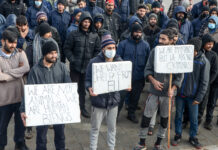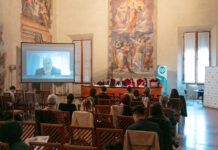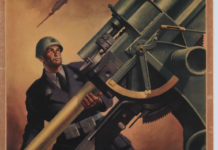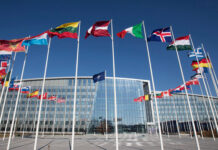Latest developments
At dawn on April 15, 2023, armed clashes erupted in Khartoum, Omdurman, and Khartoum North (the three cities that constitute the capital metropolitan area of Sudan). The perpetrators were the regular army of the country (Sudan Armed Forces or SAF) led by General Abdel Fattah al-Burhan and the Rapid Support Forces (RSF), the paramilitary militia led by General Mohammed Hamdan Dagalo, known as Hemedti. The possibility of an internal war had been looming for some time. In the weeks leading up to April 15, al-Burhan and Hemedti failed to reach an agreement to restore civilian rule in Sudan, indicating their attachment to power.
Although the two military leaders had initially joined forces in the military coup of 2021, they soon fell out. Hemedti began denouncing the coup and ostensibly aligning with civilians. However, his opposition to the regular forces was linked to the future of the paramilitaries: while the army wanted to assimilate them, it insisted on doing so under its terms and in a limited manner. On the other hand, the head of the RSF claimed a central role for the militia in the military hierarchy and thus total integration. For months, the two generals mobilized troops and resources in the capital while continuing negotiations to resume Sudan’s democratic transition. Tensions escalated to the point of activating the Trilateral Mechanism: the UN Secretary-General’s Special Representative for Sudan and representatives of the African Union and the Intergovernmental Authority on Development convened a meeting with the warring parties for the morning of April 15. However, conflict broke out before the meeting could take place.
Khartoum quickly turned into a besieged city, with citizens confined to their homes. When they managed to escape, there was a progressive mass exodus from the city. The fighting spread, especially to Darfur in western Sudan. In the early hours of the conflict, three World Food Programme (WFP) workers were killed in Darfur, prompting the temporary suspension of WFP activities in the country. The generals announced their readiness to open humanitarian corridors requested by the UN for three or four hours but reserved the right to respond to enemy fire. Despite their statements, gunfire and explosions continued. Similar situations occurred frequently. Numerous attempts to establish ceasefires for humanitarian assistance to civilians were made. On May 6, 2023, representatives of the two factions began peace talks in Jeddah, on the Red Sea, in a diplomatic initiative promoted by Saudi Arabia and the USA. However, it quickly proved futile as al-Burhan and Hemedti accused each other of violating ceasefires and continuing attacks. The civil war rages on.
What are they fighting for?
In Sudan, the regions of Darfur, the Blue Nile, and the Nuba Mountains remain theaters of conflict, where deaths and migrations continue. The war in Darfur has claimed over 400,000 lives and caused the displacement of over 2.8 million people. Internal conflicts within the army and with the civilian population, who demand democracy that has yet to arrive, also persist. Tensions are high between the regular army of the Sudanese Armed Forces and the paramilitary group known as the Rapid Support Forces (RSF), led by General Mohamed Hamdan Dagalo (Hemedti). Among the ranks of the RSF were the pro-government militias of ousted former President Bashir.
Towards the end of the dictatorship regime, the RSF played a key role in Bashir’s ousting, in a turn of events that saw the pro-government group aligning with the Forces for Freedom and Change. This allowed Hemedti to consolidate his military leadership in the country: despite General Abdel Fatteh Burhan formally being the head of the Transitional Military Council, it is clear that Hemedti has remained the effective leader, thanks in part to his personal relationships with the United Arab Emirates and Saudi Arabia, and the financial support that follows from it.
Country overview
The post-colonial history of Sudan has been tumultuous. Coups d’état and military juntas succeeded one another from the 1950s until 1989 when Omar Hassan al-Bashir seized power and held it until April 2019 when he was ousted by a coup that established a transitional government of mixed civilian and military character.
This executive initiated peace negotiations with the Revolutionary Front of Sudan, the Sudanese armed opposition consisting of various elements including armed groups from Darfur, South Kordofan, the Blue Nile, and the eastern regions. Lasting over a year in Juba, the negotiations led to an agreement signed on October 3, 2020. While the civil war officially ends, internal tensions persist. Members of the Revolutionary Front are heterogeneous, with diverging interests struggling to follow a common direction. Two politically strong armed opposition groups, the Sudan Liberation Army and the Sudan People’s Liberation Army, did not participate in the peace process, concerned that some Islamist networks control certain state institutions. The Beja youth in eastern Sudan and the Arab Misseriya in western Kordofan are also dissatisfied with the Juba Agreements. Additionally, the cost of implementing those agreements is around $13 billion USD, a sum for which Sudan necessarily needs to seek help from an international community that struggles to demonstrate solidarity.
In 2021, another coup d’état occurs: led by General al-Burhan, the military ends the transitional government and the country’s hopes for a democratic future. Protests erupt immediately, and clashes between civilians and police cause hundreds of casualties. The same scenario repeats in August 2022 when Hemedti (vice president of the Presidential Council and supposed ally of al-Burhan) announces that the military would step aside to allow the formation of a civilian government. However, a few days earlier, the de facto head of state al-Burhan had instead halted political negotiations with the democratic resistance, which had been ongoing for months with the mediation of the UN and the African Union. The outcome of these internal skirmishes within the coup government is the outbreak of civil war.
In addition to their persistent internal conflicts, the coup leaders have also had to manage the country’s internal wars. Two of the most affected regions are South Kordofan and the Blue Nile states. Here, in July 2022, violent clashes occur between the Berti and Hausa tribes, resulting in 105 deaths and 291 injuries. Also, in the summer of 2022, fighting resumes in Darfur with what are described as “Chadian bandits.” They had crossed the border to steal camels, and the ensuing battle resulted in 18 Sudanese killed and 8 Chadians. This long-lasting struggle has prompted the Sudanese government to take significant countermeasures. Darfur remains one of the most violent areas of the country, from which thousands of people continue to flee.
On the external front, Sudan has problems with Ethiopia over the construction of the Grand Ethiopian Renaissance Dam (GERD). The infrastructure threatens the water resources of Khartoum. Ethiopia continues to strengthen its relations with Eritrea, while Sudan increasingly turns to Egypt, with which it conducted joint military exercises called “Guardians of the Nile” between May and June 2021. In July 2022, the Sudanese army launched an offensive in the al-Fashaga District on the border with Addis Ababa. It is an area that has always been contested. The initiative comes after the bodies of seven Sudanese soldiers captured and killed by Ethiopian troops are publicly displayed. The Ethiopian government denies the action, but tension between the two states remains high.
Key figure or organization – Abdel Fattah Abdelrahman al-Burhan
Abdel Fattah Abdelrahman al-Burhan is the President of the Transitional Sovereign Council of Sudan, the body that took power after the coup that ousted the government of Abdalla Hamdok on October 25, 2021. In effect, al-Burhan is the Sudanese head of state. A general by rank, he has a long military career behind him. He served as a military attaché in China and commanded troops during the war with South Sudan. He became a general in the Sudanese army in 2019 and later served as the Inspector General of the Ground Forces.
Focus 1 – A country of many languages
Sudan’s official languages are Arabic and English. The latter, officially recognized as a language in 2005, is still not widely spoken among the population. Sudanese people also speak numerous dialects, among which Nubian is the most widespread, especially in the North.
Focus 2 – The demographic situation in Sudan
The demographic situation in Sudan is characterized by very low living conditions. The majority of the population lives in poverty, with a significant gap between the wealthy and the rest of society, leading to pronounced social inequalities. Life expectancy at birth is 60 years for men and 64 years for women. On average, each woman gives birth to 4.5 children, but 73 out of every 1,000 children die before reaching the age of five.


















